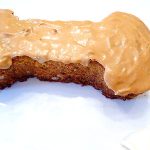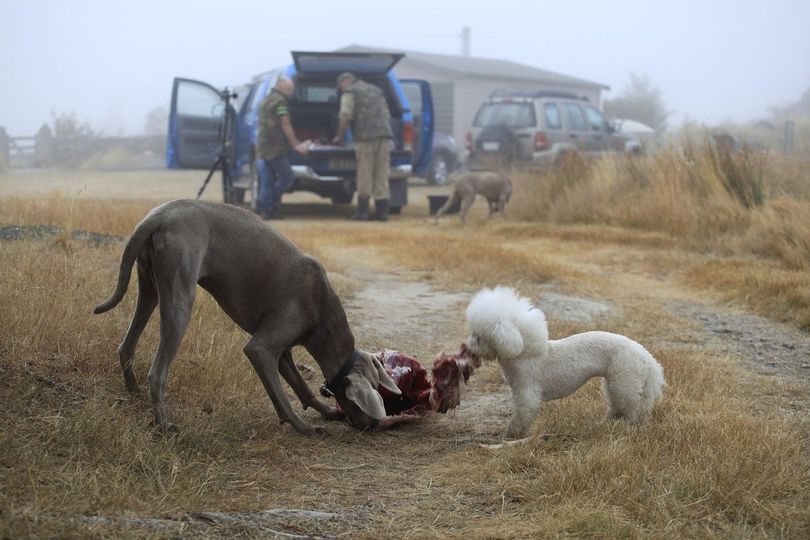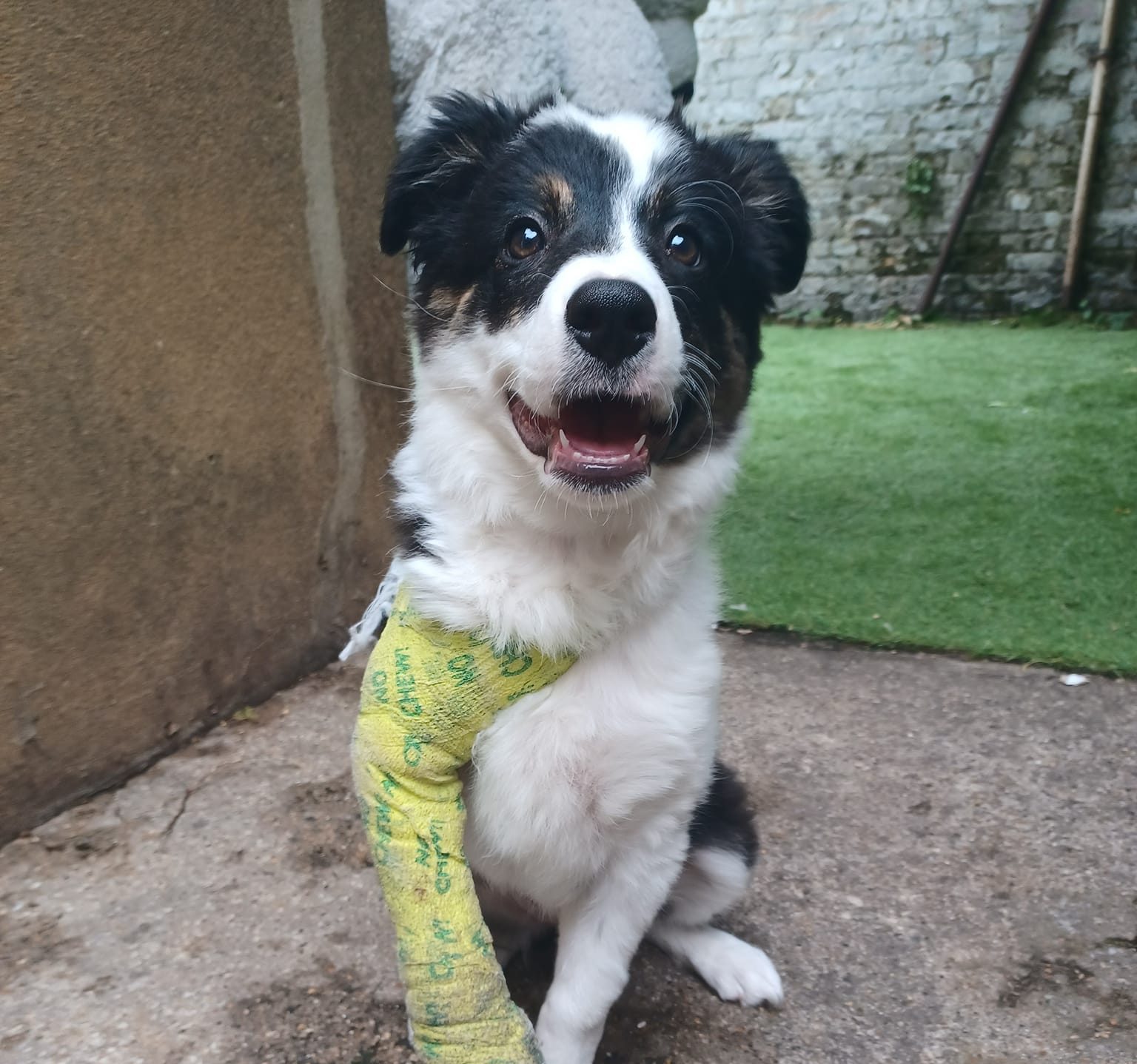
It’s nearly Easter, so here’s a timely reminder about chocolate and the harm it can cause your dog.
Most dogs love chocolate, and with their strong sense of smell they are very good at finding it. That’s not a good thing as chocolate contains theobromine, a derivative of caffeine, which is toxic for dogs.
Dogs are not able to metabolise theobromine.
Cooking chocolate, dark chocolate, and cocoa powder are the most toxic, but ingestion of ANY chocolate can be a problem.
Chocolate toxicity in dogs can be serious, especially when they consume large amounts. So if yours is the dog who ate chocolate, contact your vet.
Symptoms of chocolate toxicity in dogs
Ingestion of chocolate can lead to the following symptoms:
- Increased heart rate
- Vomiting
- Diarrhoea
- Agitation
Symptoms of more severe chocolate toxicity can include:
- Tremors
- Collapse or Seizures
- Hyperthermia
In very severe cases, ingestion of theobromine from chocolate can lead to death.
If your dog is displaying any symptoms of chocolate toxicity, or if they are displaying no symptoms but have ingested chocolate, we recommend you contact your vet.
Chocolate calculator for dogs (in Australia)
A dog chocolate calculator can be found here from Mosman Vets in NSW.
This may be used to assess the risk of chocolate products you have in your house, or if your dog has consumed a minor amount it may be useful in gauging risk.
If in doubt, call your vet.
What your vet will do if your dog eats chocolate
Not surprisingly, for vets Easter is one of the busiest times for chocolate toxicities.
If your dog happens to eat an Easter egg or other forms of chocolate, your vet may:
1. Assess how much chocolate your dog has eaten and what type
Your vet will ask how much and what type of chocolate your dog has eaten. This helps assess how dangerous the ingestion might be.
Remember that cooking chocolate, dark chocolate, and cocoa powder are the most toxic, followed by milk and then white chocolate.
The toxicity is also related to the size of your dog and the amount ingested. It is important to realise that any amount of chocolate can cause a problem so veterinary advice is always advised.
2. Induce emesis (make your dog vomit)
Your vet will most likely induce emesis (which simply means make your dog vomit).
This is usually done using injection under the skin or application of a medication in to the eye.
Vomiting tends to occur quickly and can sometimes be quite spectacular (especially if the wrapping has been consumed too 😬).
3. Further precautions
If your vet doesn’t feel enough chocolate has been vomited, or if the symptoms are serious, a charcoal meal or enema may be given to help reduce the toxicity.
Some dogs may need further supportive care including intravenous fluid therapy, and in severe cases, hospitalisation.
Chocolate isn’t the only hazard at Easter
It’s not only chocolate that can be an issue in Australia at Easter. There are a few other potential dangers you need to be aware of.
Watch out for:
1. Hot cross buns
Many people are not aware that sultanas and raisins (and grapes) may contain a toxin that can cause kidney damage in dogs.
Keep these off the menu at all times and watch for any that happen to drop on the floor (a common issue if you have little kids!)
If your dog ingests any sultanas, raisins, or grapes, then it’s worth contacting your vet.
2. Easter lilies
These beautiful fragrant flowers if ingested, can cause kidney failure. This is particularly prevalent in cats.
The stems of these lilies, leaves, flowers, and stamen are all dangerous, as is the water the flowers are stored in.
If you are worried about your pet you should call your vet who will offer advice.
3. Easter toys
Those tiny fluffy baby chicken toys, plastic Easter eggs and bunny ears may be good basket stuffers for your kids, but your pet might think they look extra tasty and fun to chew on.
These toys should be kept away from cats and dogs as they can cause a gastrointestinal obstruction.
If your pet ingests any of the above over the Easter period call your vet immediately for advice.
Easter eggs for dogs!
We’ve covered the dangers of chocolate toxicity and other Easter hazards for dogs, so let’s end this post on something more fun!
Easter can be a fun time to spend with your dogs, so why not include them in the holiday season in ways they will enjoy.
There’s a growing trend in making Easter eggs and cakes for dogs, and even a number of dog cafes which have sprung up of late (particularly in Sydney!) which offer a range of appropriately-made Easter treats!
Always keep in mind MEAT is the best treat for your dog, and you should avoid sugars and other ingredients which aren’t species appropriate.
If it were me I’d mince up some meat and organs and make little eggs out of them, which keep in mind your dogs will LOVE!
But if you want to humanise them a little, here’s a couple of healthier recipes:
Peanut butter Easter eggs FOR DOGS!
Here’s a great recipe for dog-friendly Easter Eggs made from peanut butter, coconut, and carob powder:
Grain-free Choc-Coconut Cake FOR DOGS!
Another great cake recipe for dogs can be found here on Foodie Pooch.
This cake is made from coconut flour, greek yoghurt, carob (not cocoa or chocolate powder), and is simple and easy to make.
It’s not something you want to give your dog regularly, but in terms of dog cakes there’s nutritional merit in these ingredients and most importantly it won’t cause harm.
So if your kids are pestering to make your dog a cake for Easter, chose one of the two above options!
“The Dog Who Ate Chocolate”, written by David D’Angelo









This helps assess how dangerous the ingestion might be. Thank you.
Remember that cooking chocolate, dark chocolate, and cocoa powder are the most toxic, followed by milk and then white chocolate.